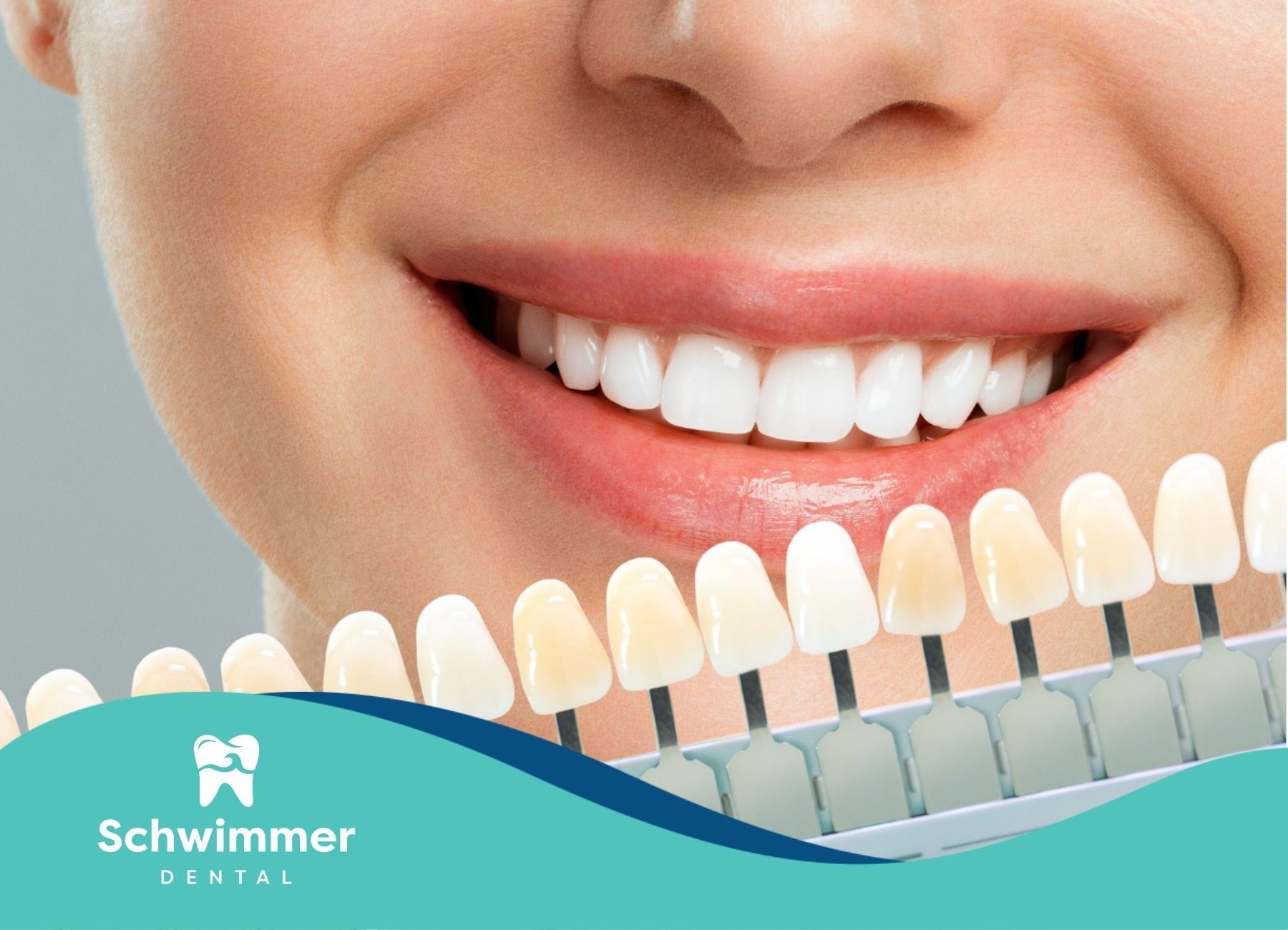The Battle Against Dental Implant Bone Loss
Understanding Dental Implant Ups and Downs
Dental implants are a go-to fix for missing teeth, but like with anything in life, they come with their share of hiccups. One biggie is the dreaded bone loss, which can throw a wrench in the whole implant gig.
What's Eating Away the Bone?
There are a bunch of things that can cause bone to vanish around your new tooth implant. Knowing these can help you dodge trouble and keep that implant standing tall:
- Peri-implantitis: Sounds scary and it is. This nasty inflammation messes with the tissues around the implant, leading to bone loss. It's not rare either, happening at 12-43% of implant spots.
- Inadequate Osseointegration: Basically, your jawbone needs to buddy up with the implant. If that doesn't happen, the implant could wiggle loose, causing bone to degrade.
- Trauma or Injury: Knock your implant and you might mess up its healing, leading to bone loss.
- Poor Oral Hygiene: Slacking on oral care can invite infections, leading the bone to take a hike.
- Systemic Health Conditions: If you've got something like diabetes, it can slow down healing. Dive deeper into that in the section on the impact of diabetes on bone loss.
- Smoking: Puffing away can mess with blood flow and immunity, setting the stage for implant drama.
Knowing this stuff helps you keep your implants happy by brushing up on oral hygiene, keeping health in check, and ditching the cigs.
When Implants Go Rogue
An implant can sometimes call it quits on you. This can happen if the implant doesn't cozy up to the bone or if peri-implantitis sets in. An implant is not doing its job if there's more than 1.0 mm bone loss in the first year and over 0.2 mm each year after.
Watch for these signs that your implant's about to jump ship:
- Clinical Mobility: If it wiggles, it's not playing nice with the jaw.
- Pain During Use: Ouch! Pain can mean nerve trouble or infection.
- Peri-implant Radiolucency: This appears as a bright patch around the implant in X-rays, usually pointing to bone loss and infection.
- Peri-implantitis: Yup, it keeps showing up and is a major cause of failures, affecting 28-77% of folks.
| Trouble Spot | Chance It’ll Crop Up |
|---|---|
| Peri-implantitis (individual-wise) | 28 - 77% |
| Peri-implantitis (spot-wise) | 12 - 43% |
| Overall fail rate | 2.1% |
| Peri-implantitis chance | 1.6% |
| Fail rate in back upper jaw | 4.2% |
These numbers put the spotlight on possible mishaps, stressing the need for giving your implants the love and attention they deserve. For more scoop on things going south, check the dental implant failure signs.
Getting your head around these potential pitfalls with dental implants can steer you toward smart prevention and lead you to explore the right treatment options before things get messy.
Preventing and Managing Bone Loss
Keeping your bones in tip-top shape around those dental implants ain't about magic—it's about doing a few important things consistently. Think of it as the foundation of healthy habits: clean chompers and some smart aftercare.
Importance of Oral Hygiene
You gotta keep those pearly whites sparkling to stop bone loss around implants. Nasty plaque and rampant bacteria? They’re party crashers that can cause infections and irritation, which beat up on your bones. Here’s the lowdown:
- Brushing: Twice a day with a soft-bristled toothbrush, add some fluoride toothpaste for flavor.
- Flossing: Once a day, like weaving a tiny rope through your teeth to snag any sneaky leftovers.
- Antimicrobial Mouthwash: One swig a day keeps the nasty bugs away.
Don’t skip out on your dentist visits—those cleanings and check-ups every six months are like pit stops for your mouth. And hey, keep an eye out for any dental implant infection symptoms, and call your dentist pronto if anything feels off.
Post-Implant Care Strategies
Taking care of your dental implants post-surgery is the secret sauce for stopping bone loss and making them last. Here’s the playbook:
- Regular Monitoring: Set those dentist dates to keep tabs on your implant’s health and stomp out issues before they snowball.
- Avoiding Hard Foods: Skip the jaw-breakers and anything that could give your implants a tough time.
- Using Night Guards: Got a grinding problem in your sleep? Throw on a night guard to keep your implants comfy.
For anyone already staring down some bone loss around their implants, acting fast is your best bet. There’s a bunch of treatments out there, depending on how and why your bones are giving up.
Follow these tips, and you’ll be doing your best to prevent bone loss while keeping those implants in for the long haul.
Addressing Bone Loss Treatment
Non-Surgical Ways to Go
Before lifting a scalpel, consider non-surgical routes for tackling the dreaded dental implant bone loss. These methods zero in on kicking out infection, calming inflammation, and cheering up gum and bone tissue.
A Regular Scrub
Trips to the dentist for a good ol’ cleaning are a must! Clearing away plaque and tartar build-up around dental implants can nip inflammation in the bud and keep bone loss at bay.
Bacteria Busters
We’re talking antimicrobial solutions—stuff like chlorhexidine—that sweep away those pesky germs hanging around your implant area, nipping infection in the bud.
Targeted Antibiotic Blast
Local antibiotics zero in on the troubled tooth area, tackling bacterial infections right where they start without bothering the rest of the body. Picture it: antibiotics in gel or fiber swooping into periodontal pockets like superheroes.
Keeping up with these tricks can help folks tackle bone loss and dodge more trouble.
Surgical Fixes for Bone Bounce-Back
When those gentler methods just aren’t cutting it, various surgical remedies step up to rebuild the bone around dental implants.
A Clear Path: Open Flap Debridement
This involves a little gum surgery, where docs expose the implant area to get rid of plaque, tartar, and any infected bits hogging the space.
Building Bone Bridges with Grafts
Bone grafts—transplanting bone tissue to fill gaps—work wonders in getting new bone growth going and stabilizing the implant.
| Grafting Material | What It’s All About | Success Rate |
|---|---|---|
| Autograft | Borrowing your own bone | High (85-90%) |
| Allograft | Handy donor bone | Moderate (70-80%) |
| Xenograft | Animal bone substitute | Moderate (70-80%) |
| Alloplast | Man-made bone stand-in | So-So (60-75%) |
Regrow with Guided Bone Regeneration (GBR)
GBR employs a membrane to guard over the graft while new bone cells do their thing. This, teamed up with bone grafts, yields primo results.
Tweaking the Implant Surface
Altering the implant's surface to ensure it buddies up with the bone better might involve giving it a rough texture or a special coating.
Want to dig deeper into the surgical side? Dive into our section on dental implant nerve damage.
Gum Boosting: Soft Tissue Grafting
Need a bit more gum support? Tuck in some extra tissue to beef up those receded gums. This boosts looks and backs up the implant.
With these surgical playbooks, dentists can tackle serious bone loss, ensuring your implants stay put and functional. Chat with your dentist about sorting out the ultimate game plan tailored just for you.
Impact of Diabetes on Bone Loss
Influence on Healing Processes
Folks battling diabetes know it's more than just keeping sugar levels in check—it's like navigating a minefield of potential health hiccups. One area that sneaks up is healing, especially when it comes to bone loss around dental implants. Why? Because with diabetes, the body struggles to juggle blood sugar, so post-implant complications can spike. Think slow-healing wounds and a higher chance of infections. Not to forget, diabetes takes a toll on blood circulation, cutting down the flow to those precious gums and jawbones needed for top-notch recovery.
| Healing Factors | Non-Diabetic Patients | Diabetic Patients |
|---|---|---|
| Blood Sugar Regulation | Normal | On the struggle bus |
| Blood Flow to Gums and Jawbone | A-okay | Lagging |
| Risk of Infection | Low | Sky-high |
| Healing Time | As expected | Seems to drag on |
Diabetes adds fuel to the fire of bone loss issues around dental implants by disrupting how the body fixes and renews itself. So, honing in on these healing steps is super important for diabetic folks who need dental implant surgeries.
Managing Diabetes for Treatment
Keeping diabetes under control isn't just important—it's the secret sauce to ensuring dental treatments don't go off the rails. A team-up between dental gurus and regular doctors is the golden ticket for well-rounded care.
Here's the game plan:
- Keeping Blood Sugar in Check: It's all about regular blood sugar checks to dodge shoals of healing problems tied to bones.
- Diet & Exercise Combo: Munching on balanced meals and staying active isn't just good for the waistline; it helps keep diabetes in line, leading to better healing and implant results.
- Medication Routine: Sticking to prescribed meds is a no-skip rule for managing blood sugar like a pro.
Diabetic folks should have ace hygiene routines, warding off infections and setting the stage for smooth healing. Plus, regular dental check-ins are a must to keep an eye on implant and bone health.
Nailing diabetes management can skyrocket the success rates of dental implants. And if allergic reactions have you worried, check out our tips on allergies to dental implants.
This holistic strategy gives patients a robust support system, cutting down on risks and beefing up the success rates of dental implant procedures with diabetes playing a co-star role.
Success Rates and Risks
Thinking about getting dental implants? It's key to know what makes them work or flop. Let's chew over what influences their success or hiccups.
Why Implants Might Go South
There's a bunch of stuff that could mess with dental implants. Stuff to watch out for:
- Bone Density: Weaker bones (levels III-IV) can spell trouble—causing 75% of implant failures.
- Surgery Before Implants: Got sinus lift surgery? That ups your chance of issues to 42%.
- Smoking: Light up often? Sorry, but smokers see problems in 8.3% of cases.
- Infection: Infections at the surgery spot can tank the whole deal, making up 8.3% of failures.
- Medical Woes: Conditions like rheumatoid arthritis can be bad news, affecting 8.3% of implants.
- Peri-implantitis: This pesky inflammation around an implant is a repeat offender, bothering 28-77% of folks and showing up in 12-43% of implant sites.
Dental Implant Oops Stats
Want the scoop on the numbers? Here’s a look at implant risks based on real-world data.
Failure Rate Breakdown
A peek into a six-year study from an oral surgery clinic spills the beans:
| Variable | Failure Rate (%) |
|---|---|
| Overall | 3.11 |
| Upper Jaw (Maxilla) | 83 |
| Lower Jaw (Mandible) | 17 |
| Bone Density (III-IV) Issues | 75 |
| Post-Sinus Lift Problems | 42 |
| Smokers' Failures | 8.3 |
| Infection Trouble | 8.3 |
| Rheumatoid Arthritis Hits | 8.3 |
Peri-implantitis Upsets
| Variable | Rate (%) |
|---|---|
| Folks Affected | 28 - 77 |
| Sites Affected | 12 - 43 |
These numbers push the point—knowing risks like allergic reactions to dental implants and dental implant nerve damage is clutch.
If you’re on the implant train or just checking them out, knowing about these stats and risks is a total must. Stick to the care steps and keep the rest of your body in check, and you can dodge a lot of the mess that might come your way.
Advanced Treatment Options
Bone Grafting Techniques
When it comes to sorting out bone loss around dental implants, bone grafting stands tall as a go-to method. It's all about moving bone tissue to rebuild areas crying out for some structure. Doesn't matter what type of bone you choose, this procedure has your back.
Types of Bone Grafts
- Autografts: Your own bone jumps ship from one spot to another.
- Allografts: Cheerful donors or bone banks lend a helping chunk.
- Xenografts: Animal bones chip in, usually from our bovine buddies.
- Alloplasts: Crafted, man-made bone fills in the gaps.
Benefits and Use Cases
Bone grafting shines, especially when dealing with peri-implantitis, where the bone gets all inflamed and grumpy around the implant. Materials like
biphasic calcium phosphate (BCP) bioceramics, with heavy hitters like hydroxyapatite (HAp) and β-tricalcium phosphate (β-TCP), juice up bone regrowth. They’re not one for causing drama with your cells and slowly morph or blend in with your natural bone.
| Bone Grafting Material | Characteristics | Benefits |
|---|---|---|
| Autografts | Your own bone | Great fit, minimal rejection drama |
| Allografts | Donor bone | Convenient, snappy process |
| Xenografts | Animal bone | Ample supply, perfect for bigger fixes |
| Alloplasts | Synthetic picks | No germ sharing, any design welcome |
Guided Bone Regeneration Methods
Guided Bone Regeneration (GBR) is another big player helping rebuild bone around dental implants. It’s all about using a membrane to safely tuck in the graft while setting the scene for new bone to party on.
Procedure Overview
How the GBR show typically goes down:
- Placement of Graft Material: Bone graft material, like biphasic calcium phosphate (BCP), gets a front-row seat in the bone problem area.
- Application of Membrane: A trusty barrier membrane covers up the graft, keeping those pesky soft tissues away.
- Healing Period: That membrane pitches a perfect setup for bone cells to make themselves at home.
Clinical Effectiveness
Five years is more than enough to see folks treated with BCP materials enjoying a solid implant life. The bone's radiodensity ends up close enough to regular alveolar bone, giving a nod to the success of the regeneration effort.
| Guided Bone Regeneration | Benefits |
|---|---|
| Protective membrane in action | Keeps soft tissues in their lane |
| Calcium phosphate marvels | Supports steady bone come-back |
| Proven track record | Bone quality looking good long term |
Getting the lowdown on these advanced treatments helps pick what's best for tackling bone loss around dental implants.
SOURCES:
https://pmc.ncbi.nlm.nih.gov/articles/PMC4170845/
https://www.jomos.org/articles/mbcb/full_html/2022/02/mbcb210065/mbcb210065.html
https://pmc.ncbi.nlm.nih.gov/articles/PMC6304842/
https://www.fda.gov/medical-devices/dental-devices/dental-implants-what-you-should-know
https://www.mayoclinic.org/tests-procedures/dental-implant-surgery/about/pac-20384622



